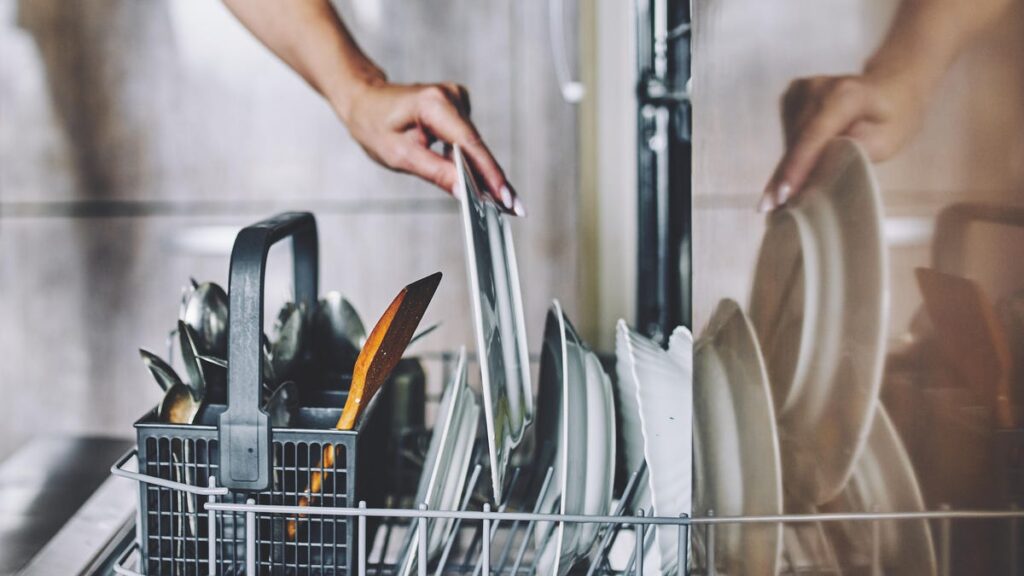Believe it or not, there’s a right and wrong way to load your dishwasher — and getting it wrong might be why your dishes come out streaky or still dirty. While it’s not rocket science, mastering the proper loading technique can save you from running multiple cycles and wasting energy. Many a Redditors have debated the right and wrong way to load a dishwasher, but the common consensus is to load it with the dishes facing downwards. But there are more things to know about effectively loading up your dishwasher.
These simple tips can lead to cleaner dishes, fewer loads, and even a noticeable impact on your energy bill over time. With 78% of US adults stressed about rising energy costs, according to a recent CNET Money survey, small changes like this can make a meaningful difference.
For more cleaning advice, check out how to clean a stand mixer, how to clean a blender and how to clean a cast-iron skillet.
1. Don’t rinse your dishes
Leave most of the washing to the dishwasher. Just scrape off the big stuff from the plates first, then load them in. Don’t worry about rinsing, as it can trick the dishwasher’s sensors. Learn more about why you should skip rinsing here.
2. Plates go on the bottom rack
Load the plates on the bottom rack, but make sure they have a little space between them. Touching can block the water jets and can also cause chips in a plate’s finish.
3. Bowls go on the top rack
Put bowls on the top rack. Make sure the bowls are tilted down so they don’t gather water.
4. Turn your cups upside down
Same for cups. Put them on the top rack in between the tines, if possible. They should be upside down so they don’t fill up with water but tilt them slightly so that water doesn’t pool in any indentations on the bottom of the cup.
5. Spoons and forks go in the utensil cup
This sounds obvious, but some people ignore the fact that there’s a special cup for utensils. If you’re one of these people, you may be compromising wash quality. Throwing a handful of utensils on the top rack will not get them as clean as putting them in their designated cup. Besides, putting them in the cup prevents them from dropping down and blocking the sprayer arms.
6. Keep your silverware and stainless steel utensils from touching
Always put silverware, except for knives, in the designated cups with the handles facing downward. Don’t let real silverware and stainless-steel utensils touch. During washing, a chemical reaction can happen that causes pitting in the metal.
7. Put knife points down, handles up
Place knives in the silverware cup with the points inside of the cup and the handles upward.
8. Don’t let spoons and spatulas fall down
Big serving spoons and spatulas are best placed on the top rack so they don’t fall and block the dishwasher’s spraying arms. A handy trick is to thread a tine through the hole in the handle to keep the item in place during the wash.
9. Wash large pots separately
Small pots can be placed on the bottom rack, but make sure to do larger pots in a separate load. Larger pots can block water jets, leaving the dishes on top dirty. Make sure that all pots are angled down so they get the full benefit of the jets, as well.
10. Plastic containers go on the top rack, away from heat
Put plastic storage containers on the top rack so they don’t get warped by the heating element.
11. Place large pans and dishes away from the dishwasher door
Make sure not to put any large pans or dishes by the door. This can block the detergent from deploying.
12. Don’t forget to do a quick prewash check
Before you start the load, do a quick check of the floor below the sprayer arms. Make sure there isn’t any food, spoons or other items that could block the filter or the sprayer arms. Foreign items down there can gum up the works and make your dishwasher not work properly.
Now you can start loading that dishwasher the right way, and get cleaner dishes every time.
For more, check out this hack to get grease out of hard-to-reach spots, and where to put your house plants so they don’t die.
No. All dishwashers have a dedicated compartment to add detergent. This ensures that the detergent dissolves effectively and cleans your dishes properly.
Yes, when you have too few utensils in a dishwasher, it can risk off-balancing the spin cycle and create noise and too much vibrations.
Read the full article here

